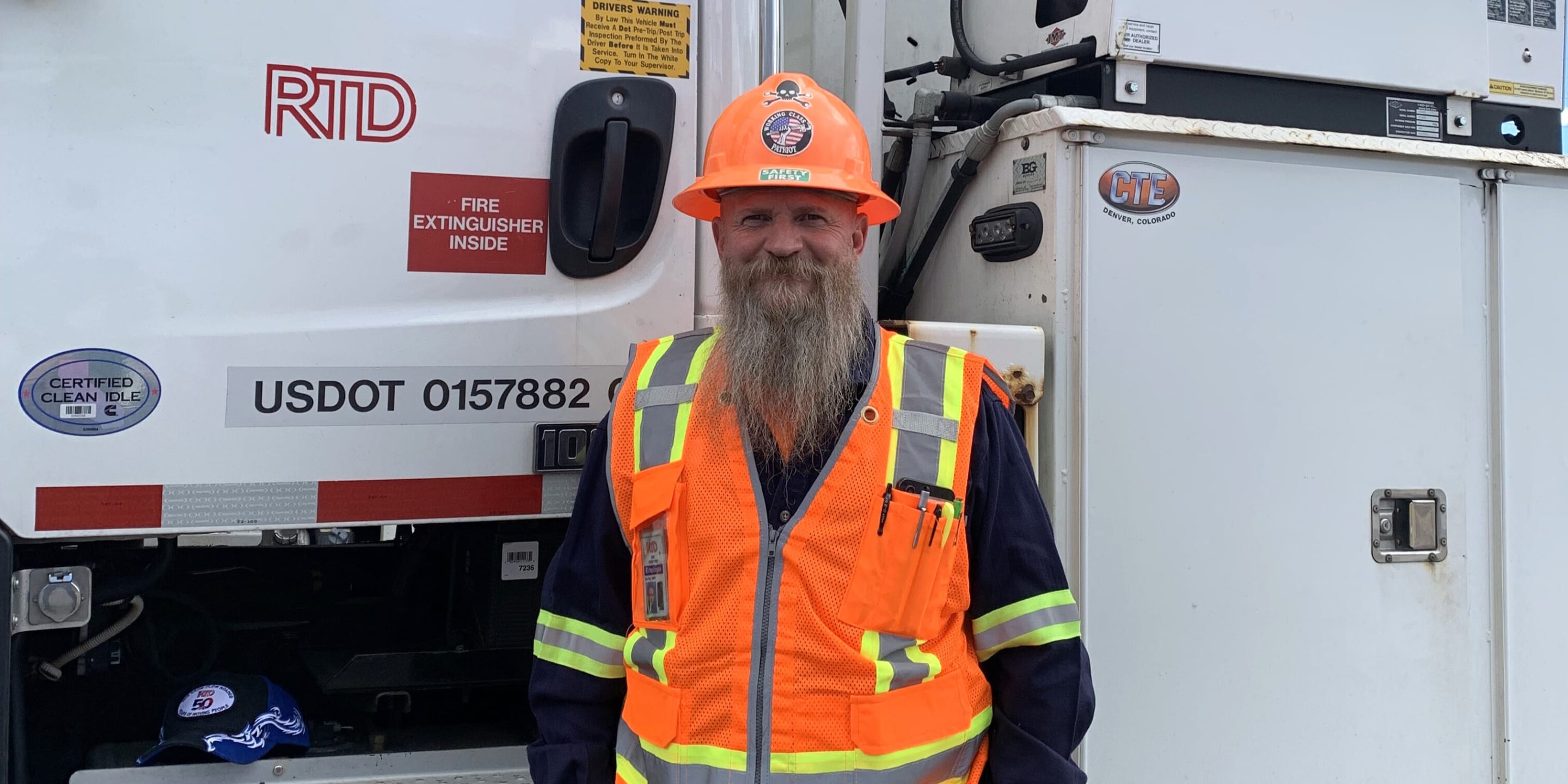
Rail Safety Spotlight: Ray Richards
In honor of Rail Safety Week, meet four RTD employees who always put safety first
During Rail Safety Week, taking place Sept. 15–21, RTD is joining communities across North America to raise awareness about the importance of staying safe around trains and railroad crossings. At RTD, safety is more than a priority. It’s also part of our everyday culture.
Throughout the week, RTD staff will be out at stations across metro Denver to engage with customers, answer questions and share tips on how to stay safe near rail lines. With 10 rail lines covering more than 114 miles, we’re committed to making every mile as safe as possible.
To mark this important week, we’re highlighting four exceptional team members who go above and beyond to ensure safety in their roles.
Meet Ray Richards with Light Rail Operations
“I would like to nominate Signal/Traction Power Maintainer Ray Richards as a representative of the MOW group. Ray was instrumental in getting the switch points painted orange for operators to be able to see them better. Ray is also on the safety committee and RWP committee and is actively promoting safety with all shifts.”
- Brian Farris (General Superintendent, Light Rail Infrastructure)
How did you join RTD, and what is your role?
I came to the company about six and a half years ago. I have been an ASE (Automotive Service Excellence) Master Technician for over 40 years. I owned and managed several auto repair shops through the Denver metro area. I founded and ran a couple of automotive charities over the course of my career as well: Wheels of Faith and Good Neighbor Garage, which is still operating. Automotive has been three generations in my family. I did just about everything in automotive that I wanted to do. Later in my life, I thought about doing something different where I could use all the skills I acquired over the years and add some to it.
RTD was a perfect fit for me, and especially this job, where I get to use all the skills I had: electronic, electrical, micro processing controls, mechanical, and add the unique skills that are required of our particular job. Several friends who had worked for RTD thought that I might be a good fit in the Maintenance of Way department, particularly as a signal/traction power maintainer. We care for the traction power substations, the high-voltage catenary wire, all the different signaling for the trains, relay houses, the switches, the crossing guards.
How do you think about safety as it relates to your work?
I think that over the course of the years, RTD has done a really good job of not just preaching safety, but practicing it in our everyday jobs and tasks. I think that starts from the top of the company and extends to rail leadership to the individual superintendents of the different groups, supervisors, the LRV maintenance crew, our train operators. Safety has worked hard to forge good relationships within the different groups and isn’t seen as an interference or hindrance to doing the job, but as a vital part of the team.
In MOW, I think that Brian Farris, Dennis Hanson and the supervisors in the training group have really worked continuously and tirelessly to evaluate safety. They’re not afraid to put a critical eye on what we’re doing and how we can do it better. As a result, we’ve implemented some great procedures and policies, such as job hazard analysis and assessment, where we look at all the different possible scenarios or safety issues in any job we’re doing to be aware of them or mitigate them. We do safety stand-downs fairly often, where as a group we look at any safety incidents within RTD or at other transit agencies across America and discuss what we can learn from them. We have regular tailgate and job briefings before any task to make sure that all employees involved are up to speed on what we’re doing.
One of the most important things, I think, is that we have safety challenges. Any employee on any task at any time can issue a safety challenge – stop all work if there’s a risk that they don’t believe was identified, or one that may have come up during that time, until it is identified, assessed and resolved.
Those kinds of things have really helped in making safety a strong point in what we do. I think RTD has created a culture of safety that is one of the defining benchmarks of who we are as an organization. And I’m really proud to work with such a talented group of people who put employees’ safety and the public’s safety above everything that we do.